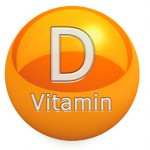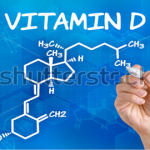 Study data indicate that midlife and older adults who are generally healthy may not have a significantly lower risk of fractures when taking supplemental vitamin D3 than adults taking placebo. Meryl S. LeBoff, MD, chief of the Calcium and Bone Section at Brigham and Women’s Hospital, Boston, and colleagues performed the study in men 50 years of age or older and women 55 years of age or older. The authors note that although some individuals in the study may have had vitamin D deficiency, low bone mass or osteoporosis, the study did not target individuals with those conditions for enrollment. The findings were published in The New England Journal of Medicine in July 2022.1
Study data indicate that midlife and older adults who are generally healthy may not have a significantly lower risk of fractures when taking supplemental vitamin D3 than adults taking placebo. Meryl S. LeBoff, MD, chief of the Calcium and Bone Section at Brigham and Women’s Hospital, Boston, and colleagues performed the study in men 50 years of age or older and women 55 years of age or older. The authors note that although some individuals in the study may have had vitamin D deficiency, low bone mass or osteoporosis, the study did not target individuals with those conditions for enrollment. The findings were published in The New England Journal of Medicine in July 2022.1
The large, randomized, controlled trial evaluated the supplementation of 2,000 IU per day of vitamin D3 without co-administered calcium. The diverse patient population (N=25,871) was 50.6% women and 20.2% Black. At baseline, the mean 25-hydroxyvitamin D level was 30.7±10.0 ng/mL.
The Findings
After two years of treatment, patients in the vitamin D group had a mean level of 25-hydroxyvitamin D of 41 ng/mL. The majority of participants who reported a fracture (87%) consented to medical-record review, and the investigators obtained documentation for 91.3% of those participants. Fractures were confirmed by medical record review in 769 of 12,927 participants in the vitamin D group and 782 of 12,944 participants in the placebo group.
The researchers found that individuals in the vitamin D group did not have a lower risk of total incident nonvertebral or hip fractures than those in the placebo group. The findings were similar for exploratory end points, including major osteoporotic fractures, pelvic fractures and wrist fractures. (Note: Researchers excluded periprosthetic and pathologic fractures.) Additionally, the investigators found no modification of the treatment effect after adjusting for baseline characteristics, including age, sex, race or ethnic group, body mass index or serum 25-hydroxyvitamin D levels.
Discussion
This study analysis extended from a parent trial called the Vitamin D and Omega-3 Trial (VITAL). VITAL evaluated whether supplemental vitamin D3 and/or n-3 fatty acids would prevent cancer and cardiovascular disease in men 50 years of age or older and women 55 years of age or older in the U.S. During that study, investigators randomly assigned participants to one of four groups: vitamin D plus n-3 fatty acids, vitamin D plus placebo, n-3 fatty acids plus placebo or double placebo. Published in 2019, the results found no differences in cancer and cardiovascular health between the groups.2


